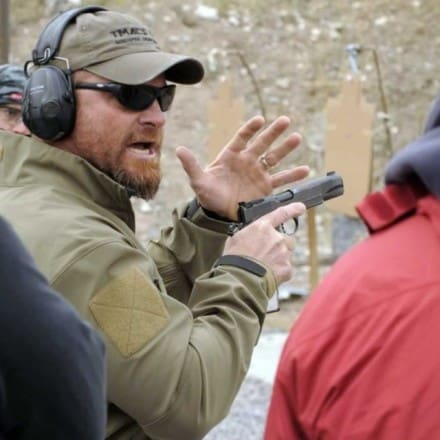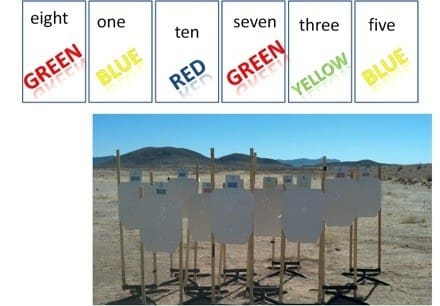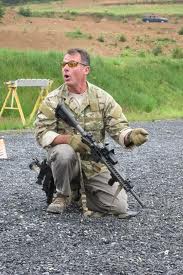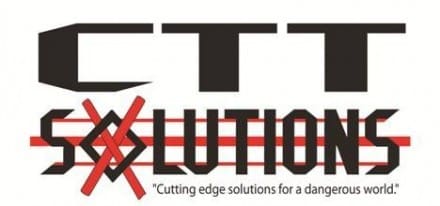I am all about ‘Bang for the Buck’ when it comes to training. Both in information output and proper usage of assets available. In this case, the assets are rounds. I am in the same boat as everyone else when it comes to round scrounging. I do not need however, to fire several hundred rounds for a good training session. Many of my courses of fire require fewer than 10 rounds. An example course of fire is the Grid of fire; this drill provides even better bang for the buck when it’s run as the ‘Mod.’ That is, start strong hand, transition to support hand at the next cone, back to strong hand and so on.
Another easy one to set up that requires only seven rounds (10 rounds loaded) is ‘Turn and Burn’. Use a C-zone Steel target. Place cones at 25, 20, 15 and 10. Start at the fifty yard line with only 10 rounds loaded. On ‘Go’, run your ass off to the 25 and hit, then to the 20 and hit, 15, 10, turn and burn back to the 15, to the 20, and finish at the 25. Must hit at each yard line. If you do not accomplish seven hits with the ten rounds loaded, you are a ‘No Go.’ A good time for this one is thirty seconds.
Patrick McNamara
SGM, US Army (Ret)

Patrick McNamara spent twenty-two years in the United States Army in a myriad of special operations units. When he worked in the premier Special Missions Unit, he became an impeccable marksman, shooting with accurate, lethal results and tactical effectiveness. McNamara has trained tactical applications of shooting to people of all levels of marksmanship, from varsity level soldiers, and police officers who work the streets to civilians with little to no time behind the trigger.
His military experience quickly taught him that there is more to tactical marksmanship than merely squeezing the trigger. Utilizing his years of experience, McNamara developed a training methodology that is safe, effective and combat relevant and encourages a continuous thought process. This methodology teaches how to maintain safety at all times and choose targets that force accountability, as well as provides courses covering several categories, including individual, collective, on line and standards.
While serving as his Unit’s Marksmanship NCO, he developed his own marksmanship club with NRA, CMP, and USPSA affiliations. Mac ran monthly IPSC matches and ran semi annual military marksmanship championships to encourage marksmanship fundamentals and competitiveness throughout the Army.
He retired from the Army’s premier hostage rescue unit as a Sergeant Major and is the author of T.A.P.S. (Tactical Application of Practical Shooting).
Gunfighter Moment is a weekly feature brought to you by Alias Training & Security Services. Each week Alias brings us a different Trainer and in turn they offer some words of wisdom.















































































































